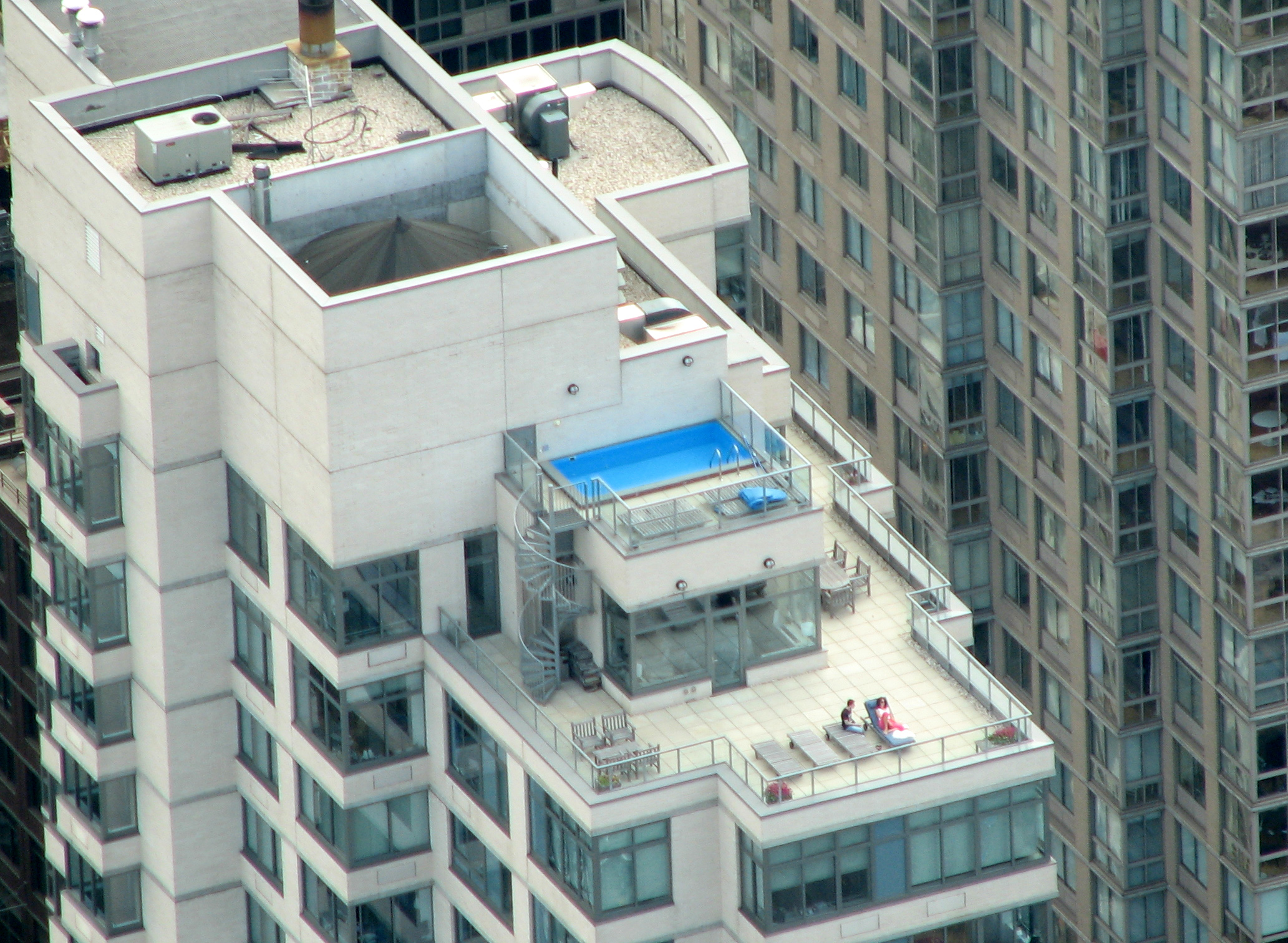Penthouse
The term 'penthouse' is used to describe an apartment on the top floor of a high-rise building. According to the New York City building code, a penthouse is ‘...an enclosed structure on or above the roof of any part of a building, which is designed or used for human occupancy.’ Penthouses are frequently the largest, most luxurious, and therefore the most expensive, apartments in a building.
In architectural terms, a penthouse is a single-occupancy living space built onto the rooftop as an additional floor, set back from the outer walls. These setbacks act as terraces and allow for significantly larger open spaces than cantilevered balconies. Some penthouses may have two or more levels. These might be referred to as a 'duplex', 'triplex' and so on.
Penthouse apartments became popular in New York during the ‘Roaring Twenties', as economic growth created many of the first skyscraper developments. Wealthy Americans equated luxury and prestige with having the best view from a building, and so favoured the top floor apartments.
Penthouses are also characterised by their luxurious amenities which are often not included in the rest of the building’s apartments. Such features might include:
- A private entrance or lift (without which, it is sometimes argued that the apartment does not in fact qualify as a true penthouse).
- Higher/vaulted ceilings.
- Fireplaces.
- A large floor area.
- Larger windows.
- A swimming pool and jacuzzi.
In recent years, the term acquired a broader definition as developers seek to make the most out of their new construction projects. Sometimes the term ‘penthouse’ is used to refer to apartments on one of the uppermost floors of a high-rise building rather than being on the top floor. Buildings can be designed with setbacks on multiple top floors, in an attempt to create more apartments with terrace views that can be promoted as ‘penthouse apartments’. These are sometimes referred to as 'sub-penthouses' and have a lower level of specification than the actual penthouses.
High-rise buildings may also have 'mechanical penthouses' which are structures on the roof deck that enclose mechanisms such as lift equipment and rope descent systems (RDS) for window cleaning.
[edit] Find out more
[edit] Related articles on Designing Buildings Wiki
Featured articles and news
The UK's Modern Industrial Strategy: A 10 year plan
Previous consultation criticism, current key elements and general support with some persisting reservations.
Building Safety Regulator reforms
New roles, new staff and a new fast track service pave the way for a single construction regulator.
Architectural Technologist CPDs and Communications
CIAT CPD… and how you can do it!
Cooling centres and cool spaces
Managing extreme heat in cities by directing the public to places for heat stress relief and water sources.
Winter gardens: A brief history and warm variations
Extending the season with glass in different forms and terms.
Restoring Great Yarmouth's Winter Gardens
Transforming one of the least sustainable constructions imaginable.
Construction Skills Mission Board launch sector drive
Newly formed government and industry collaboration set strategy for recruiting an additional 100,000 construction workers a year.
New Architects Code comes into effect in September 2025
ARB Architects Code of Conduct and Practice available with ongoing consultation regarding guidance.
Welsh Skills Body (Medr) launches ambitious plan
The new skills body brings together funding and regulation of tertiary education and research for the devolved nation.
Paul Gandy FCIOB announced as next CIOB President
Former Tilbury Douglas CEO takes helm.
UK Infrastructure: A 10 Year Strategy. In brief with reactions
With the National Infrastructure and Service Transformation Authority (NISTA).
Ebenezer Howard: inventor of the garden city. Book review.
The Grenfell Tower fire, eight years on
A time to pause and reflect as Dubai tower block fire reported just before anniversary.
Airtightness Topic Guide BSRIA TG 27/2025
Explaining the basics of airtightness, what it is, why it's important, when it's required and how it's carried out.
Construction contract awards hit lowest point of 2025
Plummeting for second consecutive month, intensifying concerns for housing and infrastructure goals.
Understanding Mental Health in the Built Environment 2025
Examining the state of mental health in construction, shedding light on levels of stress, anxiety and depression.
The benefits of engaging with insulation manufacturers
When considering ground floor constructions.
Lighting Industry endorses Blueprint for Electrification
The Lighting Industry Association fully supports the ECA Blueprint as a timely, urgent call to action.
























